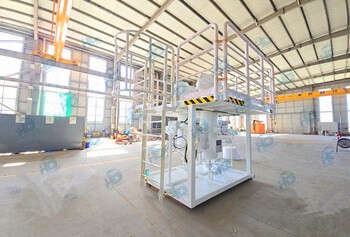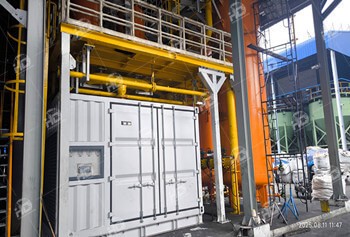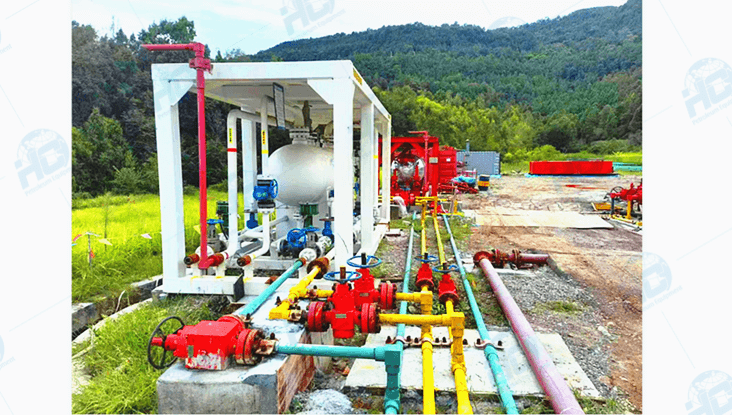In the process of petroleum extraction, Well Test 3 Phase Separators play a crucial role in the separation of oil, water, and gas. However, even when the equipment is operating normally and meeting production requirements, issues such as elevated liquid levels in the oil chamber may arise. Today, HC wishes to discuss the reasons behind the elevated liquid levels in the oil chamber of Well Test 3 Phase Separators and propose solutions to mitigate this challenge.
Common Causes of Elevated Oil Chamber Liquid Levels:
Insufficient Gas Pressure:
Issue: Inadequate gas pressure can hinder the normal flow of oil within the oil chamber, leading to reduced liquid levels or blockages.
Solution: Ensure gas pressure meets operational requirements. Regularly inspect gas pressure and make adjustments as needed to prevent flow interruptions.
Excessive Liquid Inflow:
Issue: High liquid inflow, particularly when the liquid temperature is low, may submerge the separator, causing suboptimal oil-water separation and resulting in elevated oil chamber liquid levels.
Solution: Optimize heating systems to meet temperature requirements and implement effective strategies to manage high liquid inflow. Adjust separator parameters to accommodate varying liquid volumes.
Operational Inexperience:
Issue: Inexperienced operators may fail to adjust demulsifier dosage promptly when observing abnormal fluctuations in the separator's liquid levels.
Solution: Conduct regular training for operators to enhance their understanding of separator operation principles. Emphasize the importance of timely adjustments to demulsifier dosage for optimal separation performance.
Addressing Elevated Oil Chamber Liquid Levels:
To effectively resolve the issue of elevated oil chamber liquid levels in Well Test 3 Phase Separators, operators and maintenance personnel should consider the following steps:
1.Regularly inspect the separator's internal components to identify potential issues or signs of wear and tear.
2.Clean and maintain the equipment to prevent the accumulation of deposits that could impact its performance.
3.Adjust separator parameters, such as flow rates and pressure settings, to align with varying well conditions and liquid volumes.
4.Implement proper controls to manage temperature and pressure fluctuations during well testing operations.
5.Provide ongoing training for operators to enhance their knowledge of separator operations and troubleshooting techniques.
6.Emphasize the importance of proactive monitoring and timely adjustments to maintain optimal separation efficiency.
By combining routine maintenance, parameter optimization, and operator expertise, elevated oil chamber liquid levels in Well Test 3 Phase Separators can be effectively addressed. By identifying and mitigating potential causes, operators can ensure that the separator functions seamlessly, meeting production requirements while minimizing operational disruptions. As a professional three-phase separator manufacturer, HC is well-versed in the working principles and internal structures of such separators. Our after-sales service team is ready to provide technical guidance and training. Feel free to contact us with any questions or concerns.
-
2025 / 11 / 01
 HC Successfully Delivers Gas-Liquid-Sand Separator for Xinjiang Oilfield Project
HC Successfully Delivers Gas-Liquid-Sand Separator for Xinjiang Oilfield Project -
2025 / 08 / 20
 HC Successfully Delivered Filter Coalescer Skid to Malaysia
HC Successfully Delivered Filter Coalescer Skid to Malaysia -
2025 / 08 / 12
 Thailand Sulfur Removal Unit Commissioned for Natural Gas Processing Plant
Thailand Sulfur Removal Unit Commissioned for Natural Gas Processing Plant
- +86 158 6190 3617









